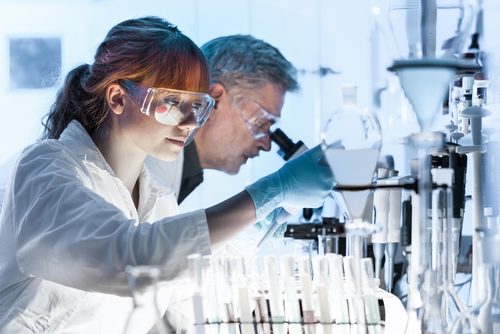Transgelin Protein May Provide Clues on PAH Progression in Congenital Heart Disease, Study Says

Transgelin, a smooth muscle protein, is abundant in patients with irreversible pulmonary arterial hypertension (PAH) secondary to congenital heart disease and may contribute to PAH progression, a study reports.
The study, “Transgelin as a potential target in the reversibility of pulmonary arterial hypertension secondary to congenital heart disease,” was published in the Journal of Cellular and Molecular Medicine.
In patients with congenital heart disease (CHD), PAH is often a secondary complication. For CHD patients, interventional and surgical repair of the heart defect has been found to be beneficial. However, the severity of PAH complicates their recovery and mortality rate, especially in those with irreversible PAH.
Remodeling of blood vessels (vasculature) is key in PAH progression. Researchers believe that understanding the factors that influence vasculature remodeling and contribute to PAH irreversibility can help identify new therapeutic targets.
Transgelin is a protein that is highly expressed in smooth muscles — muscles that support blood vessels. The protein has been implicated in cancer, but its role in PAH progression is unknown.
Now researchers in China have confirmed the presence of transgelin in lung tissue from CHD-PAH patients, and further evaluated its role at the molecular level.
A total of 14 patients with CHD-PAH were enrolled in the study. Patients were all scheduled to undergo a CHD repair surgery, and lung biopsy samples were collected during the procedure. The mean pulmonary arterial pressure (mPAP) of the patients was measured at one-year follow-up to determine the success of the procedure.
Researchers found that of the 14 patients analyzed, 10 had an mPAP score of less than 25 mm Hg indicating reversal PAH, while the remaining four had a mean mPAP score of 25 mm Hg or greater, indicating irreversible PAH.
By analyzing patient samples through tissue staining (immunohistochemistry), researchers found that transgelin was strongly detected in pulmonary arterioles — specialized small blood vessels in the lungs — in all CHD-PAH patients. This staining was markedly stronger in samples from patients with irreversible PAH, suggesting higher amounts of transgelin.
Interested in PH research? Check out our forums and join the conversation!
Protein profile of lung tissue samples from patients confirmed these results, by revealing that although transgelin was highly expressed in CHD-PAH patients, its expression was 2.5 times higher in the PAH irreversible group than in the reversible group.
Based on the findings in patient lung tissue, researchers then investigated the role of transgelin in smooth muscle cells. They designed two small interfering RNA (siRNA) molecules able to either inhibit or induce an overproduction of transgelin. siRNAs are a molecular tool often used by researchers to interfere with the expression/activity of specific genes.
Researchers found that siRNA-based inhibition of transgelin production in primary human pulmonary arterial smooth muscle cells (hPASMCs) in the laboratory resulted in the death of hPASMCs, a process called apoptosis, reducing these cells’ proliferation and migration.
In contrast, hPASMC cells overproducing transgelin had an increased proliferation and migration, and a high level of the anti-apoptosis protein Bcl2.
An increase in cell proliferation (cell numbers) and cell migration are signs of cells that contribute to repairing cell damage, the researchers noted; however, excess cell proliferation and migration, due to overproduction of transgelin, can be harmful and lead to severe vascular remodeling, as seen in patients with CHD-PAH who, as researchers showed, have higher levels of transgelin, especially patients with irreversible PAH.
Therefore, the team concluded that overproduction of transgelin induces a change in the “proliferation, migration and anti‐apoptosis of PASMC [that] may promote pulmonary arterioles remodeling, which may in turn finally lead to irreversible pulmonary vasculopathy in CHD‐PAH.”
The team suggested that “transgelin may be a potential target in the development of irreversible CHD‐PAH,” and that further studies should address “transgelin and CHD‐PAH development and their corresponding pathways and mechanisms.”







